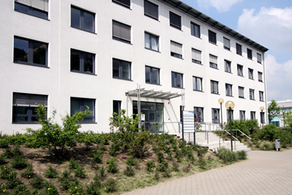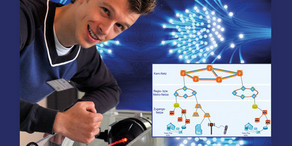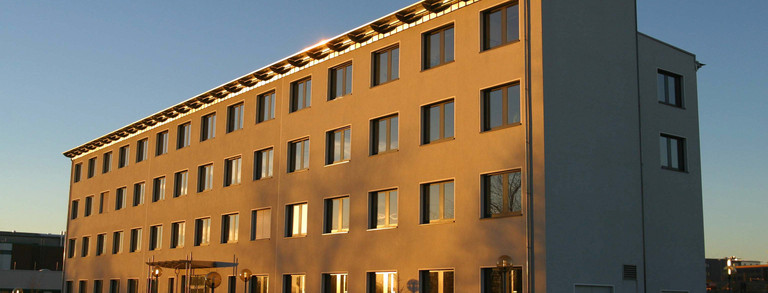About
The chair makes important contributions to research and teaching in the field of high-frequency technology. The entire breadth of the subject area is covered in teaching. In the research, the glass fiber based optical transmission technology is the main focus. In addition, however, investigations are also being carried out, for example into the further development of field calculation methods, charge carrier transport in quantum components, alternative approaches for mode vortex chambers, the characterization of electrical lines and circuit board materials or the propagation of traveling waves on lines.
The technology available at the chair is mainly used in the field of silicon photonics for the production of optical components such as adaptive filter structures. In the laboratories we also have the measurement technology to characterize the properties of the manufactured components. Furthermore, there is the possibility of examining the behavior of the components when used in glass fiber-based optical transmission systems. In other areas, the very extensive experimental equipment is used to characterize the properties of subsystems such as optical amplifiers or to investigate the influence of polarization-dependent or non-linear effects on the transmission behavior.
In addition to the experimental investigations, extensive work is also carried out on the basis of analytical calculations and numerical simulations. For this purpose, we develop our own simulation models as well as entire simulation platforms at the chair.
The chair has extensive experience in the successful implementation of joint research projects. These were mainly created through cooperation with partners from industry, research institutions and other universities as part of projects funded by the Federal Ministry of Education and Research or the German Research Foundation. In addition, direct cooperation projects with industrial partners also took place. In addition to the large projects that lead to doctorates, the chair also likes to carry out technology transfer on a smaller scale. For example, the extensive experimental equipment can be used for consulting activities and investigations for which cooperation partners from industry have not yet been able or willing to set up their own measurement options.
The chair was founded in 1982 by Prof. Dr.-Ing. Edgar Voges †. For twenty years, the chair had its home on the third and fourth floors of the chemistry building C1. In December 2001, the new building for electrical engineering was moved into and the chair was relocated with excellent laboratory equipment and clean room technology. The research work initially focused on the field of integrated optical circuits with planar optical strip waveguides. In the mid-1990s, highly efficient methods for modeling and simulating fiber optic communications networks were developed.
In the spring of 2007, Prof. Dr.-Ing. Peter Krummrich took over the chair. In addition to continuing the very successful activities in the field of technology and simulations, the experimental equipment was greatly expanded in order to be able to carry out our own measurements in the field of data signal transmission and system experiments.
Research
The traffic volume in the data transport networks that form the backbone of the Internet is constantly increasing. In order to avoid bottlenecks in the future, the chair conducts research in the field of fiber-based optical transmission technology and photonics. The focus is on approaches to increasing capacity in a cost- and energy-efficient manner. Terahertz technologies with their application potential in the tension between photonics and electronics is also a research area of the chair.
Current research focus:
- Use of silicon photonics for cost- and energy-efficient signal processing using adaptive optical filters
- Increase in transmission capacity through space multiplex operation and multimode technology
- Influence of the physical layer on future flexible dynamic networks
- Development of systems of THz technology and photonics
The chair has its own silicon technology for the production of filter structures as well as excellently equipped laboratories with optical component and system measurement technology and develops its own simulation platforms. This equipment is used in many research collaborations with industrial partners, research institutions and other universities.



